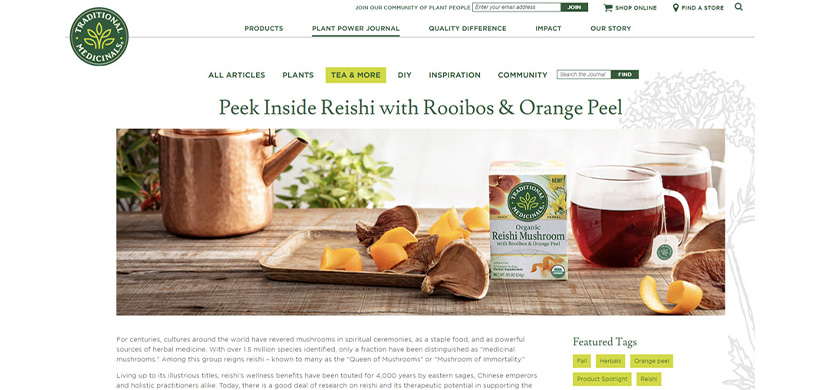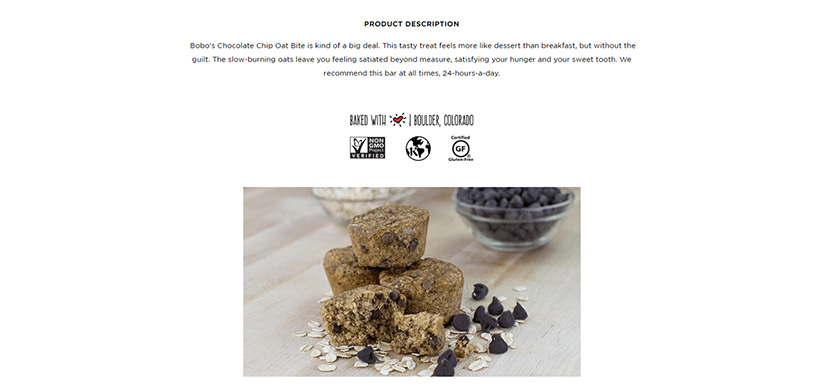You’ve been chosen to work on a brand’s new product launch. Heck, yeah! They’re hiring writers to craft blog posts, product descriptions and landing pages on their website. You’re thrilled to be on the team, but aren’t sure how to approach these tasks. You’re not alone.
Becoming a creative freelance writer in the product marketing niche is highly sought after, and if you polish those skills, projects will keep landing in your inbox. After all, businesses are built are on selling products to consumers. There will always be a need to write about the goods offered by brands.
“Product marketing is the process of bringing a product to market, promoting it, and selling it to a customer. Product marketing involves understanding the product’s target audience and using strategic positioning and messaging to boost revenue and demand for the product.” ~ HubSpot
When do writers write about products?
As your client steps you through the onboarding process, you’re likely to hear about their product marketing content plan. This essential roadmap in their overall marketing initiatives details the exact type of content they will produce.
Here are a few popular options we see ClearVoice clients request of our freelance writers:
- Blog posts
- Landing pages
- Letter from the CEO
- Newsletter articles
- Pamphlets
- Product descriptions
- Sales pages
- Social media posts
- Video scripts
- White Papers
2 stellar examples of product marketing
The best way to learn more about product marketing writing is to see it in action. The following examples do a stellar job of connecting with a defined audience, providing education and positioning their brands as providers of solutions.
1. Traditional Medicinals tea article
I don’t know about you, but I’ve never considered drinking mushrooms. I’m an avid herbal tea drinker (I’m sipping on some now, in fact) for health support and never have I ever seen dried mushrooms blended with traditional herbs and spices in a teabag. So when I stopped by Traditional Medicinal’s website to see what new blends they might be offering, I paused on the Organic Reishi Mushroom with Rooibos and Orange Peel.
The product-focused article educated me about the medicinal properties of the reishi, its historical uses and finally, its time-tested healing properties. As I was getting intrigued, the copy then explained the positive environmental impact and how mushrooms can be part of sustained immune system support. This health-minded gal is sold!
2. Bobo’s Oat Bites product description
During the pandemic, I’ve upped my snacking game to pro-level. I recently discovered these mini-muffin-shaped oatmeal bites at my local grocery store and gave them a try. I originally bought them for a quick breakfast option, but they’ve graduated to the after-meal sweet treat category too. They’re tasty, soft and convenient.
So, I decided to check out their online product description, and it’s like the marketing team behind these four perfectly crafted sentences got inside my head. This is a clear audience targeting win. I personally feel like they know me! Kudos to the writer for going beyond glorifying the natural ingredients and nutritional benefits of oats in this bottom of funnel copy. They hit the mark here with brevity, authenticity and causal language. I’ll be buying again, and again.
How can writing about products enhance your content?
Tell me if this scenario sounds familiar. You see an ad in your Facebook feed for an intriguing product. You click through to learn more and all you get is one image, a price and an Add to Cart button. Are you kidding me? I need to know details, why this thing is amazing and maybe even some dimensions/sizes/colors and user instructions. I sigh, and click that X as I say bye, bye to the product page. Fail.
If a business is selling something, they need to explain what it is to their shoppers. As a writer, you have to figure out what needs to be told here, with guidance from the content strategy put in place by your client. I like to also channel my inner consumer when writing product copy. What would I want to know about this item? What information would help me make a final decision? If the consumer is on the product page, hovering their finger over the Buy Now button, you better reel them in them with enticing, educational copy.
E-commerce platform giant Shopify explains that product-based marketing copy must share what a product is and why it’s worthy of your hard-earned dollars. Writing solid, informative product copy enhances your content marketing overall in multiple ways.
Keep this mind:
- Writing product-focused copy that speaks to your target audience builds brand awareness and loyalty. This translates to sales over time.
- Sharing more than a bullet-point list of specs or adjectives is more relatable and enticing to your human readers. (Google loves lists. People like sentences.)
- Using specific words to describe the product and how it might be used in the reader’s life makes it more tangible. Go beyond fluffy adjectives like very, excellent, quality, top-notch and other empty modifiers to make an emotional impact.
- Trying a storytelling technique and using your imagination to put your reader in a scenario where the product in question would be undeniably useful or smile-provoking makes the product memorable.
Since your reader can’t physically hold the product you’re writing about online, wield those creative word skills intentionally to help them mentally engage all of their senses and experience ‘perceived ownership.’
Research published in the Journal of Consumer Research says, “For non-owners, or buyers, perceived ownership can be increased with either mere touch or with imagery encouraging touch.”
So, get visual. Get inside the heads of your buyers. Be razor-focused on your target audience. Sell the experience of touching and using product. Here’s how.
4 do’s when writing about products
Before we pull out the thesaurus and channel our latest creative writing course, let’s remember we are crafting copy in the marketing vertical. This means adhering to editorial and branding style guides, being ready for legal teams to review our statements and appeasing the brand client.
With this mindset, approach writing about products with your client’s needs and goals top-of-mind.
1. Do get inside the heads of your buyer personas.
Who will be reading your product copy? Keep the buyer personas for your client handy as you write. Your overall approach and word choice will be influenced by the fictitious consumers you’re speaking to.
Your copy should specifically speak to the pain points and goals of your buyer personas in their tone, according to HubSpot. This means using the language and colloquialisms of this population. Do they tend to use conversational humor? Are they buttoned-up business speakers? Talk to them as they would talk to you — about what matters to them.
2. Do address your target audience.
Some brand clients will offer multiple buyer personas and several product lines. When crafting copy, know who your target audience is and which item(s) to highlight for each content asset you create.
For example, I have a consumer personal care products marketing client who targets two audiences: beginners and advanced users. Before I start writing any product-focused content, I look at the audience mentioned in the assignment brief and adjust my mindset. For beginners, I give more background, resources and explanations. For the seasoned users, I assume they know the basics and present more complex ideas and outside-the-box ways to use the products.
3. Do use persuasion and creativity in your writing.
Now that you know who you’re writing for per project, let’s talk about persuasion. After all, the purpose of marketing content is to gently nudge the reader to become a buyer. Word choice matters when moving readers through the sales funnel.
Moz reminds us to help readers get over potential buyer’s remorse and hesitation by writing with a reassuring tone. Create feelings of happiness and remind the reader of the value they are receiving. Compliment the reader on their taste, choice and ability to find what they need. Let them know how the product will save them from their pain point.
4. Do sell the experience of the product.
Yes, I’m talking about visualization, again. This is really the golden nugget in product marketing, so I’m going to drive home this aspect as often as possible. Salespeople spew off lists of specs and benefits in their sales calls. Marketing writers sell emotions, ideas and solutions.
Setting a scene and showing the product in action is a winning formula, according to Moz. Let’s say you’re writing about toothpaste. It’s not very exciting, everyone needs it and most people already have a go-to brand since they buy it regularly. But, what if your words could persuade someone who worries about oral odor and dingy teeth to try a new tube? Would this product description do the trick?
We know you’re nervous about that first meeting. Whether it’s a job interview, blind date or lunch with a friend from high school, you want your smile to shine. Brand X toothpaste uses the natural cleaning power of baking soda to whiten your teeth and the perky flavor of peppermint essential oil to freshen your breath. From conversations to kissing, we’ve got you.
- Painpoints: Bad breath and discolored teeth concerns
- Buyer persona: likes natural products, is hyper-aware of personal hygiene
- Audience: 30-somethings with self-care on the mind
4 don’ts when writing about products
Think of this. Once a reader has landed on your product copy, they are likely middle or bottom of funnel. They’re making a decision. To harness that fragile moment, turn to a bit of psychology for guidance. Do you remember Maslow’s Hierarchy of Needs?
Kudos to WooCommerce for realizing this motivational theory is an essential roadmap to effective marketing copy. In short, appealing to a consumer’s deep emotional needs including love, belonging, a need to understand, safety, esteem and self-actualization helps them make a decision that feels well-informed and necessary.
“In short, a good product description mirrors the thoughts, desires, and needs of your target audience.” ~ WooCommerce
1. Don’t lead with features and benefits.
I don’t know about you, but last time I shopped for a new car, my final decision wasn’t swayed by the fuel efficiency rating, horsepower of the engine or size of the tires. Those selling stats were top of funnel for me. They kept me around and helped me decide to take a middle-of-funnel test drive.
Once I was behind the wheel, zooming my way to the bottom of the funnel in my buyer’s journey, I was truly focused on the aforementioned thoughts, needs and desires. Will this car give a smooth ride on long road trips? Does it have a sunroof to enjoy on summer days? Does it fit my budget? Will my dog fit in here? Had the salesman focused on the benefits on the car window sticker, I would have tuned him out. Instead, he asked about my needs and uses for the car and played up how the car could fit into my road trip-loving lifestyle. If you’re wondering, yes, I bought the car. Why? I could picture my daily routine being enhanced with the SUV.
2. Don’t sell to the whole world.
Wait. What? We are here to help sell the product with our words. But to do that, we don’t sell the product. We sell the experience and feelings related to the product. Now, go one step deeper.
Talk to one reader. Yes, one. Use words like you and your. Make the copy personal. I like to pretend that I just discovered the product and I’m chatting about it with a girlfriend. Oh, girl, this plum-hue lipstick goes with every single fall sweater in my closet and it makes me look so put together in two quick swipes across my lips. Plus, it lasts all day! You have to check it out too!
3. Don’t repeat your copy across the web.
With the ability for brands to sell their products via multiple online retailers, it’s enticing for them to do a cut-and-paste job when it comes to filling out product descriptions. If your client suggests doing that, say NO!
Google reminds us to avoid creating duplicates online across various URLs. This can be seen as a deceptive attempt to win more search engine traffic by dominating SERPs. Don’t do that! Instead, make sure the product copy you create is unique for each retail outlet, speaking to their audience and your ideal buyers.
4. Don’t forget SEO short and longtail keyword integration.
Finally, no marketing guide is complete without a mention of SEO. As writers in this niche, we have to be sure our words actually get found and appease search engines.
Your client will provide one or more keyword phrases they’d like you to weave into your copy. I’m the first to say this task isn’t always easy, especially when the creative mind takes over and you’re in love with the flow of a sentence. But, make the SEO phrase work in your copy. You’re writing for marketers. Keywording matters to them.
Takeaway tips for writing about products
If you have a flair for explaining details and creating visual scenarios, you’ll excel at writing product-focused copy for brands. Whether it’s a blog post, white paper or product description, keep in mind these four quick tips.
- Go beyond product specs and lists of benefits. Instead, paint a picture of the consumer using the product and feeling a positive emotion while doing so.
- Keep your marketer’s hat on. Be mindful of the content asset’s purpose in the sales funnel, editorial guidelines and SEO requirements.
- Choose words with meaning. Avoid fluffy adjectives and empty sales-speak phrases. Use descriptive words and details to amplify the awesomeness of the product.
- Write something you want to read and put in your portfolio. If you’re bored while creating it, just think how your editor and client will perceive your work.
Learn more about the role of a product description writer. Need more writing work? Create a CV to showcase your writing talent to the brands partnering with ClearVoice.








